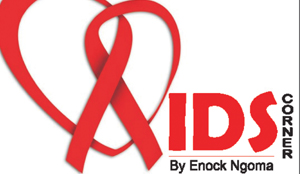 ON September 22, 2017, the National HIV/AIDS/STI/TB Council (NAC) organised an all-stakeholder-inclusive National HIV Prevention Consultation meeting whose aim was to come up with a position paper which the Government through the Minister of Health is expected to present to the Global HIV Prevention Coalition to be held in Geneva on October 10 and 11, 2017.
ON September 22, 2017, the National HIV/AIDS/STI/TB Council (NAC) organised an all-stakeholder-inclusive National HIV Prevention Consultation meeting whose aim was to come up with a position paper which the Government through the Minister of Health is expected to present to the Global HIV Prevention Coalition to be held in Geneva on October 10 and 11, 2017.
The one day consultative meeting was held at Lusaka’s Radisson Blu Hotel.
NAC acting Director General Fortune Chibamba told the participants that the meeting provided the stakeholders with an opportunity to dialogue and adopt cutting edge strategies which will stand out as game changers towards preventing HIV infections among Zambians in conformity with global intentions.
Mr Chibamba said “the meeting will determine our position as a country in terms of affirming our resolve and commitment towards reducing HIV infections and ending AIDS by 2030. As a national coordinating body of the response, NAC is committed to ensure that all stakeholders work together to achieve maximum results through collective actions.”
He said while significant investment has been made in HIV and AIDS programming, globally, and by individual countries, (Zambia is no exception) there is still considerable work that needs to be done to achieve the desirable results. This has led to global recognition and commitment that there is need to revamp and re-invigorate HIV prevention on a wider scale.
He added that Zambia is dedicated to step up its HIV prevention interventions. Prior to the meeting, in the past few weeks, NAC facilitated a stock taking exercise to determine what we have as a country in terms of HIV prevention and what it is that needs to be done to scale up HIV prevention interventions. The stock taking exercise focused on five prevention pillars namely:
– Voluntary Medical Male Circumcision (VMMC)
– Pre Exposure Prophylaxis (PrEP)
– Condom programming
– Key populations
– Adolescent Girls and Young Women.
Mr Chibamba encouraged the participants to carefully review and examine the results of the stock taking exercise and make input to the final product that will form the development of the national position paper.
Representing Health Minister Chitalu Chilufya, Director of Public Health and Research Andrew Silumesi said it is not a secret that Zambia has made significant progress in the fight against HIV and AIDS with over 800, 000 people of the estimated 1.4 million living with HIV now on treatment. Dr Silumesi said however it is still worrying that despite all the positive strides made, 46, 000 new infections are still occurring annually, hence the importance of such gatherings.
He challenged the gathering to critically review the five pillars of prevention and make appropriate recommendations for the ministry to have a strong national position paper. “Let’s look at the existing gaps for us to reach the 90-90-90 dream. Government is committed to providing leadership at community and national level in collaboration with the global agenda,” he said.
Dr Silumesi said prevention should go together or alongside with treatment and to achieve this, all sectors should be part of the response and all stakeholders should take this seriously so that we move as one in these efforts. He said new infections can be averted with appropriate programmes and interventions in place.
According to the National HIV and AIDS Strategic Framework (NASF) 2017 – 2021 recently launched by the Zambian government through NAC, Zambia has one of the highest HIV burdens in sub-Saharan Africa. In 2016, around 46, 000people became newly infected with HIV in Zambia (ZAMPHIA 2016). The current estimates for overall HIV annual incidence among adult men and women aged between 15 and 49 years is 0.70 per cent (PEPFAR 2016; UNAIDS 2016). The annual incidence among adults aged 15 – 49 is higher in women (1.08 per cent) compared to men (0.33 percent) (PEPFAR 2016). The adult HIV prevalence in Zambia has also declined, falling by 19 per cent from 2003 to the current levels of 11.2 per cent (CSO 2014).
However, despite the declines, the HIV prevalence rate is the seventh highest rate globally (UNAIDS 2016). Approximately, there are 1.2 million people living with HIV in Zambia (UNAIDS 2016).
Zambia has a generalised HIV epidemic among adults aged 15 – 49 years with more women (13.6 per cent) than men (8.5 per cent) living with the virus (CSO 2014). Women are disproportionately affected due to several factors including gender imbalances in all spheres of life and Gender based Violence (GBV).
It is against this background that Zambia has to come up with a position paper on its HIV Prevention strategies to be presented at the Geneva meeting later this month (October). I am sure when the recommendations on key issues are put together and a position paper in place, this will be shared with you the reader in this very column. For now I pen off.
For comments write to knoxngoma@gmail.com or call/text +260955883143






